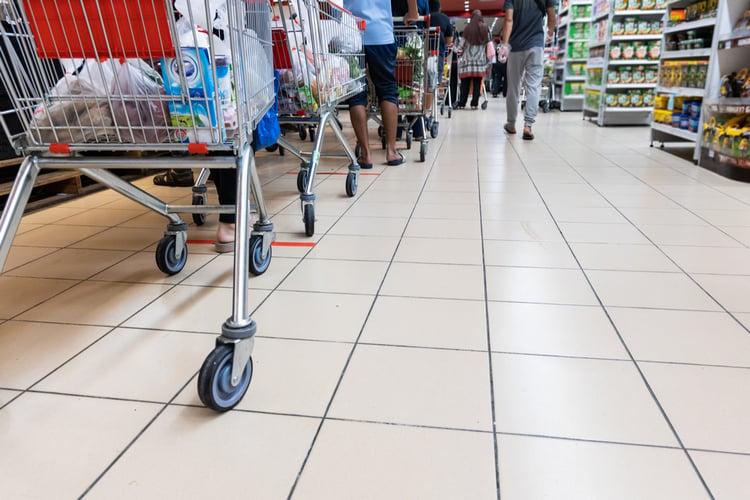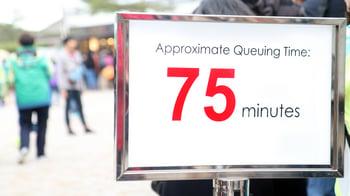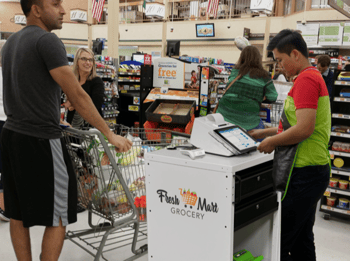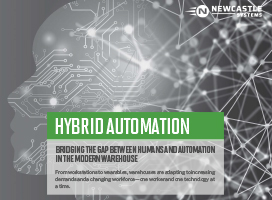
Especially during busy periods and holiday surges, retailers are finding new ways to cut down on wait times to maintain customer relationships and provide better customer service—and it all comes down to line busting. Mobile printers and powered retail carts are making all the difference, allowing customers to pay from anywhere and banish long lines forever.
Common Queue Management Issues Retailers Face
The average American spends a staggering 37 hours standing in lines each year, which is a problem for both shoppers and retailers. Long wait times are frustrating for consumers and can result in lost sales for businesses.
Roughly 70% of retailers report that shoppers forced to wait in long lines to pay for purchases will abandon their efforts and leave after about five minutes. Here are some of the most common queue management issues retailers face.
 Long wait times — Consumers are increasingly impatient and aren’t willing to wait in long lines to make retail purchases.
Long wait times — Consumers are increasingly impatient and aren’t willing to wait in long lines to make retail purchases. - Limited staff availability — Retailers may struggle to staff stores sufficiently enough to handle queues during peak hours, leading to extended wait times for customers.
- Improper queue design — When queues are designed poorly, this can lead to frustration and confusion for customers, resulting in even longer wait times.
- Inconsistent service levels — Customers expect consistent service levels regardless of the day of week or time of day. Failing to deliver this can impact the customer experience.
- Lack of visibility — Customers prefer to know how long they will have to wait in a queue. If a retailer doesn’t offer this information, it can lead to dissatisfaction.
- Insufficient technology — Retailers that fail to address queues using available technology solutions may be left behind by competitors that do.
Queue Busting — Why Retailers Should Address the Problem
Queue busting refers to strategies that help reduce checkout lines and wait times at retail stores, service businesses, restaurants, and other establishments. This is a particularly important issue for retailers, where long lines can impact the overall customer experience. Some of the benefits of queue busting include:
1. Faster Checkout
Simply put, breaking up lines leads to faster checkout experiences for customers. A quicker checkout makes customers happy and also frees up sales staff to handle other things like inventory management, returns, and customer service.
2. Reduced Store Congestion
Long lines in stores are annoying to customers and staff, and they create other problems. Crowds might deter some shoppers from entering the store, and there may even be some safety issues.
3. Improved Customer Service
When stores implement queue-busting solutions, sales associates can dedicate more time to assisting customers on the floor. They can help shoppers make purchasing decisions and even upsell, both of which can deliver a better customer experience.
4. More Sales
It’s not surprising that customers who are forced to wait in long lines will either abandon their purchases or vow to find a competitor next time they go shopping. When retailers make breaking up long queues a priority, this can increase sales and overall results.
Top Queue-Busting Solutions for Retailers
By understanding the queue management problems retailers face, businesses have begun addressing these issues with various strategies. Here are some of the top queue-busting solutions retailers can use to deliver a better customer experience and improve sales.
Curbside Pickup
This option gained popularity during the pandemic. Basically, consumers purchase an item online and choose to have it brought out to their vehicle instead of opting to go into the store.
This “buy online, pick up in store” (BOPIS) option allows consumers to make selections from the comfort of their homes and skip the line at the store. Major retailers that offer this service include Target, Best Buy, and some grocery stores.
Mobile Checkout
 Instead of requiring customers to queue up at the front of the store to pay for their items, retailers can provide other options using mobile technology. Specifically, powered retail carts can be stationed throughout the store, where customer service associates can help customers checkout when they are ready.
Instead of requiring customers to queue up at the front of the store to pay for their items, retailers can provide other options using mobile technology. Specifically, powered retail carts can be stationed throughout the store, where customer service associates can help customers checkout when they are ready.
Staff members will have more opportunities to interact with customers as they are shopping since they won’t be required to stay up front. Nordstrom is one retailer that uses this type of mobile checkout option.
Automated Checkout
Some businesses are choosing to get completely “hands-off” when it comes to the retail checkout process. Automated checkout allows customers to simply walk out of the store with the items they wish to purchase.
How does automated checkout work? Amazon Go stores is one retailer experimenting with the process. Customers scan their Amazon app as they enter the store. Using a combination of RFID sensors and cameras, the retailers can determine what the customer is purchasing when the leave.
Ship to Home
Another strategy that retailers and costumes are using to bust queues is having items shipped to their homes. Customers still travel to retail outlets to view, try on, or select the items they want. But, instead of standing in line to make their purchase, they will purchase the item online and have it shipped to their home, usually for free. This can also allow customers to get a specific item they want, such as if the store doesn’t have a particular color or size in stock.
Self-Service Checkout
Self-service checkout kiosks have become more commonplace in recent years. Many retailers have implemented them in response to labor issues. But they can also issue problems with long customer lines.
When retailers, like Walmart or Target, offer the customer the option to do self-checkout, this can reduce check-out lines. Some retailers may also install powered retail carts that function as self-check out stations.
As the retail industry continues to grow, so will the challenges facing it. One of the biggest problems facing these businesses remains queue management. Long lines frustrate customers and can result in lost sales. Fortunately, solutions like powered retail carts can help retailers bust queues and deliver a better customer experience.












